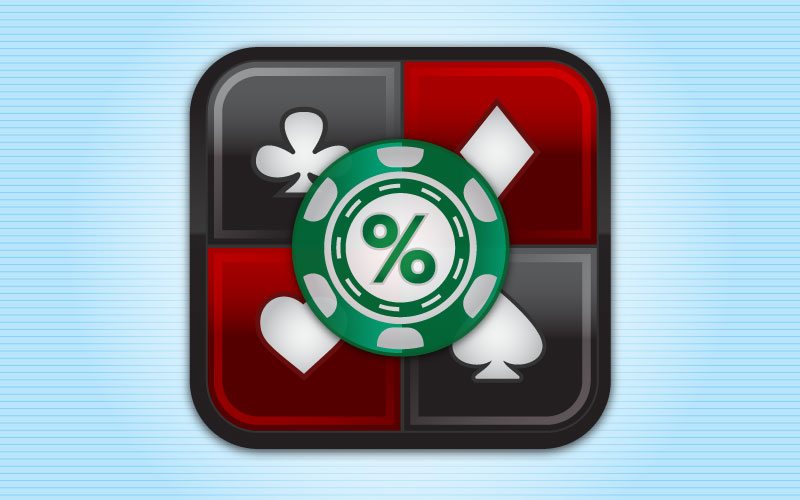Introduction
When you’re calling hoping to hit a hand, there are a lot of variables at play that aren’t always in your favor. We’re going to look at some of those variables here and see how they all come together to affect your total EV of calling. We’re also going to break down the concepts of pot odds, implied odds and reverse implied odds in ways that can actually help you to improve your decision-making process.
While I know that this is going to seem like a topic that’s been done to death, the vast majority of serious micro and small stakes players do not have a strong understanding of it.
As always, if you’re having trouble following the math portion of this column, then start here and come back once you’ve finished that tutorial series.
The Components of Calling With a Draw
Suppose we’re on the turn against a single opponent, and we’re facing a bet (or raise). If we have a drawing type of hand, we can evaluate calling based on a few different ideas. Here are some of those ideas:
- Pot Odds – This is a comparison of how much we’re calling to how much money is already in the pot. The better the pot odds, the easier it is for a call to be +EV.
- Implied Odds – This is an evaluation of how much money we can expect to get the times we hit the best hand. Players almost universally over-estimate this. Also, players almost universally think they are the exception to the previous sentence. Our opponent’s aggression and the strength of his or her range play into this a lot.
- Reverse Implied Odds – This is an assessment of how much money we’ll lose on the river when we improve and don’t have the best hand. Along similar lines, players virtually always under-estimate the effects of reverse implied odds while simultaneously believing they are the exception to the rule of players under-estimating the same effects. This depends primarily on the texture of the board, the strength of your hand and your opponent’s range.
- Bluffing on the River – When you’re out of position, you have to consider the chances of having a +EV bluff leading the river. This usually depends on the cards you can bluff on, your opponent’s range and how likely he or she is to fold. This isn’t usually a major factor since a lot of players will check/call to pick off bluffs when draws miss. You can also bluff raise, check/raise and so on. (For the sake of this column, we’re going to skip over looking at scenarios where we bluff after calling down).
While we can talk in the abstract about how each of these factors come into play, we can actually quantify them in certain situations as well. I’m going to walk you through this process in the remainder of this week’s column.
An Example Scenario
Suppose we have QsJs on a board of Ks8s7c4h. The pot is $17 as we go into the turn, and we’re heads-up and out of position. We have $92 remaining in our stacks. We check, and our opponent places a bet of $12 to make the total pot to us $29.
Pot Odds
In the most basic sense, we can say our pot odds are $29:$12 which is about 2.4:1. The common thought is to compare this to the odds of hitting our flush which are 4.1:1, and then we could see that the pot odds alone do not allow us to call here. That’s a very simplistic way of looking at it, and if we’re being honest, it doesn’t really have a place in our thought process in the games of 2015.
Implied Odds and Reverse Implied Odds
We can get a little deeper by thinking about the money we could get on average from the times we hit and get paid off. We know that we hit a spade a total of 9/46 of the time which is about 19.6 percent of the time. One problem there is that two of those spades pair the board (the 7s and 4s). So along those lines, we have seven clean outs. However, unless the ace of spades comes, we could be beaten by a better flush.
What we’re seeing here is that the implied odds and reverse implied odds are both combined in a way that can’t be separated. When you have one, you have to have the other. This is why we can’t just look at one or the other by themselves. Instead, we’re going to have to form an EV calculation equation that takes all of the possibilities and combines everything into one value.
Considering the Outcomes
Take a look at all of the potential outcomes of calling. Find the chance of each of these happening and how you think the betting will unfold to find the estimated EV of the scenario.
- You miss everything and check/fold with no real chance of winning the hand.
- You hit the ace of spades and never have to worry about reverse implied odds.
- You hit a non-paired spade other than the ace and have to worry about a small degree of reverse implied odds.
- You hit a paired spade and have to deal with playing the river on a paired board.
And that’s it.
Putting It All Together
Again, if you aren’t sure how to go through these outcomes and figure it all out, then work through this series of tutorials. It’s a very simple process when it’s broken down in the way that I teach it, and it doesn’t involve any kind of advanced mathematics outside of knowing how to do basic addition and multiplication.
Discuss this post in the forum in this thread.
Submit your review | |









